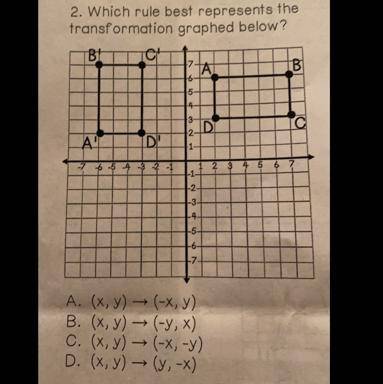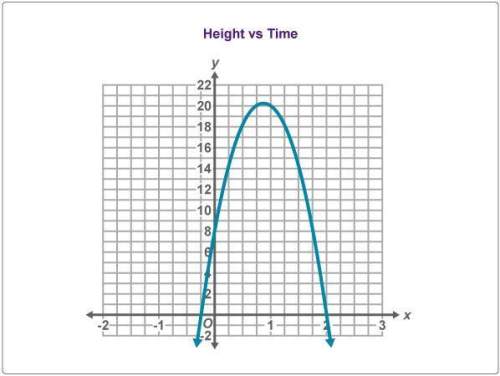Which rule best represents the
transformation graphed below?
A. (x, y) → (-x, y)
...

Mathematics, 22.01.2022 18:10 keaton3410
Which rule best represents the
transformation graphed below?
A. (x, y) → (-x, y)
B. (x, y) → (-y, x)
C. (x, y) → (-x, -y)
D. (x, y) → (y, -x)


Answers: 2


Another question on Mathematics

Mathematics, 21.06.2019 18:00
Aman is 6 feet 3 inches tall. the top of his shadow touches a fire hydrant that is 13 feet 6 inches away. what is the angle of elevation from the base of the fire hydrant to the top of the man's head?
Answers: 2

Mathematics, 21.06.2019 23:30
An engineer scale model shows a building that is 3 inches tall. if the scale is 1 inch = 600 feet, how tall is the actual building?
Answers: 3

Mathematics, 22.06.2019 03:00
Ashley spent half of her lunch money on a turkey sandwich. then she spent two-thirds of the money she had left on a bottle of juice and the rest of the money on a cookie. if the cookie cost $.75, how much lunch money did ashley have to start with?
Answers: 2

Mathematics, 22.06.2019 03:40
Assume that females have pulse rates that are normally distributed with a mean of mu equals 72.0 beats per minute and a standard deviation of sigma equals 12.5 beats per minute. complete parts (a) through (c) below. a. if 1 adult female is randomly selected, find the probability that her pulse rate is between 65 beats per minute and 79 beats per minute. the probability is? b. if 16 adult females are randomly selected, find the probability that they have pulse rates with a mean between 65 beats per minute and 79 beats per minute. the probability is? c. why can the normal distribution be used in part (b), even though the sample size does not exceed 30?
Answers: 3
You know the right answer?
Questions

History, 07.12.2019 11:31

History, 07.12.2019 11:31


Mathematics, 07.12.2019 11:31

English, 07.12.2019 11:31


Mathematics, 07.12.2019 11:31


Social Studies, 07.12.2019 11:31


Mathematics, 07.12.2019 11:31

Mathematics, 07.12.2019 11:31



English, 07.12.2019 11:31




Mathematics, 07.12.2019 11:31





